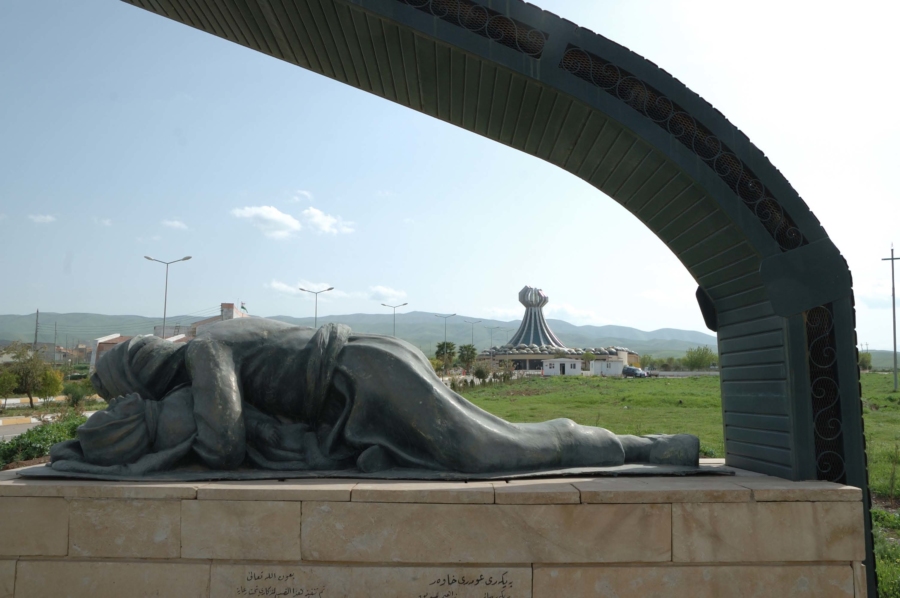The eight pointed star predates the founding of Islam and appears in older civilisations, like those of the Sumer. It’s said to be the symbol for the Sumerian god Anu, creator of the universe. Also called the Islamic star, the symbol, in the shape of an octagram, resembles two overlapping squares.
The first square is said to stand for the Kaaba, the most sacred site in Islam, which is the black cube at the centre of the Masjid Al Haram Mosque in Mecca, Saudi Arabia, and is referred to as the centre or the universe. The four corners of the second square represent the four natural elements: air, water, fire, and sand.
Other interpretations link the second square to the geometric representation of the Dome of the Shrine in Jerusalem, which is Islam’s second holiest place next to Mecca and was the religion’s first Qibla – not to mention an important milestone in the growth of Islam.
Green is one of the pan-Arab colours – and part of the Iraqi flag. It stands for purity, fertility, and peace, as well as for hope.
The Islamic star had a revive in the 80s in Baghdad, when the Iraqi government, specifically the Municipality of Baghdad (Amanat al Assima), commissioned the development of Haifa Street and Al Karkh neighborhoud. The Islamic star is a typical ornament that adorns buildings and walls in Haifa Street.









